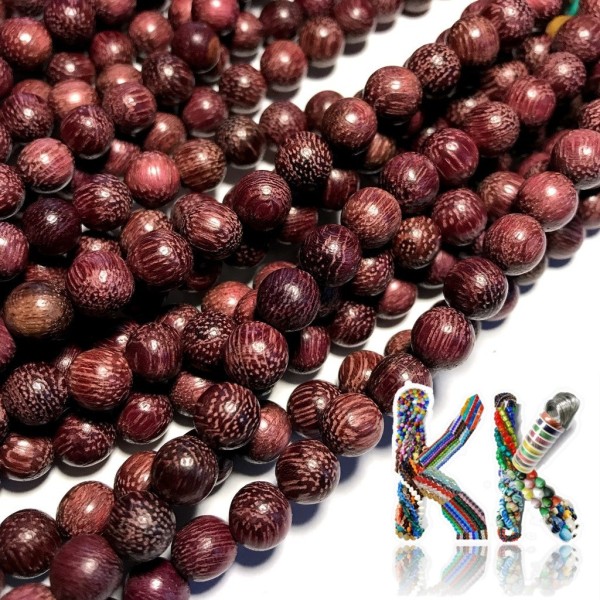Red Sandalwood Beads - Round - Ø 8 mm, Hole: 1-1.5 mm
Beads made of real red sandalwood with a diameter of 8 mm and a hole for a thread with a diameter of 1-1.5 mm. The beads are absolutely natural, without any dye. Thanks to storage at the manufacturer with other types of fragrant wooden beads, they may also smell of other wood.
Country of origin of the bead production: China
THE PRICE IS FOR 1 PIECE.
Beads made of real red sandalwood with a diameter of 8 mm and a hole for a thread with a diameter of 1-1.5 mm. The beads are absolutely natural, without any dye. Thanks to storage at the manufacturer with other types of fragrant wooden beads, they may also smell of other wood. Beads are mainly used for the production of eastern-tuned jewelery, where they come from.
Sandalwood, from which beads are made, is one of the rare hardwoods. Sandalwood grows abundantly in Southeast Asia, such as India, Nepal, Bangladesh, Pakistan, Australia, Sri Lanka, and throughout the Pacific (eg, Hawaii).
Country of origin of the bead production: China
Due to the color setting of the monitor, the color of the goods may differ slightly from reality.
Data sheet
- Weight
- 1 ks cca 0,12 g
- Material
- Wood
- Shape
- Round
.
How to identify dyed minerals, artificial minerals and imitations? Simple hammer test can do the trick..
-
How to choose correctly?
-
What is the difference between waxing, dyeing, heating?
-
Why do beads fade?
-
Is there anything I can do against it?
-
Hammer tests for Jade, Agate, Malachite, Opalite, Azurite, Turquoise, Tyrkenite, Larimar, Hematite and Coral
-
When buying beads, why are there different color qualities from the same mineral on the same string?
.
A series of videos to help you navigate your bead selection. Watch the hammer tests where we show the differences in real minerals, synthetic substitutes and plastic imitation minerals. Fortunately, we have everything clearly marked on the Katlas Beads store, we never lie. This is a certainty which is hard to find on other e-shops.
From time to time, we come across someone complaining that they ordered a mineral in a certain colour and that some minerals have a slightly different shade or spots., how do we navigate the selection process? You need to understand that raw minerals are never identical. And it's proof that it's not an imitation or synthetic. On the Katlas beads eshop, you will come across multiple grades of qualities that address these queries.
After watching the videos, you will have accurate information and be able to navigate all the e-stores selling mineral beads.
Don't forget to subscribe to our YouTube channel. You won't miss any important videos and expert advice that will make you an expert in beading.
.













